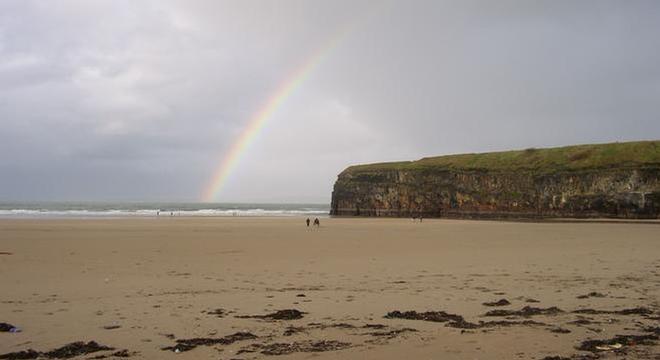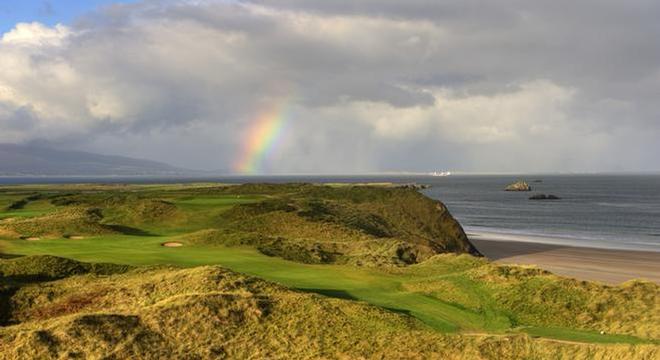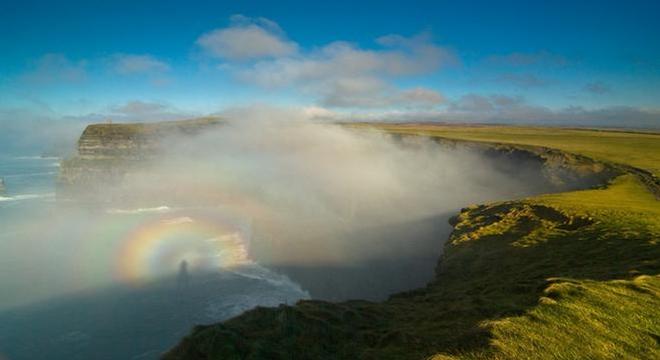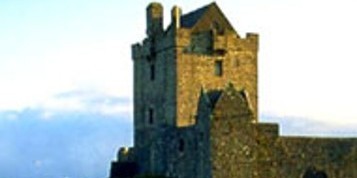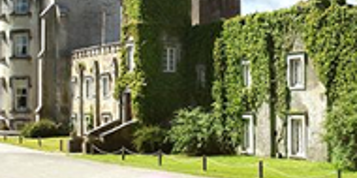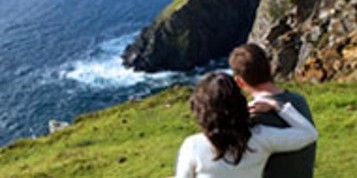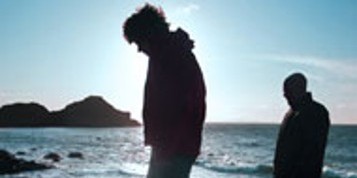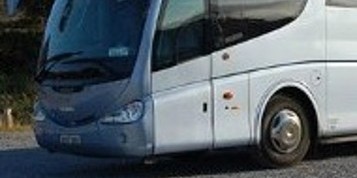WILD ATLANTIC WAY
Wild Atlantic Way 12 Nights
The Wild Atlantic Way is Ireland’s iconic driving route. The entire route begins just before Malin Head in North Donegal which is Ireland’s most Northerly point and ends close to Ireland’s most Southerly point, Mizen Head in County Cork.
15% Off ALL rail and self-drive vacations! Book by April 30th!
Book ANY self-drive or rail vacation by April 30th and enjoy 15% off! Don't miss out - explore more for less!
*CIE tours and Knitting tours not included.
-V3.png)
This self-drive tour around the coast of Irelands spectacular Wild Atlantic Way is accessible through Shannon airport and is a 12 night tour based on exploring the highlights of this hauntingly beautiful coastal route.
The Wild Atlantic Way driving tour boasts the fact that it is the longest defined coastal route in the world, stretching for 2500km along Ireland’s western seaboard. During this tour guest will have the opportunity to experience the full extent of Irish traditions and the cultures that created them, all while tracking the rugged coastline of the Island and maybe even getting the chance to pick up a word or two of our own native language.
The west coast of Ireland is without a doubt the most culture rich region in the country. Here the Gaelic culture thrives with much of the population still speaking Irish as their primary language. While much of Ireland has to some degree abandoned our native tongue there is no sign that will be happening along the west coast anytime soon. If anything it is the people and their devotion to their culture that might distract you from the wonderful sights to be seen. There people, although fiercely loyal to their own, will also welcome visitors with open arms and regale you with stories and the history of their homesteads. By day you will be kept busy trying to soak up as much of the local scenery as possible including the magnificent Cliffs of Moher, the Aran Islands, Killary Harbor and the stark Burren Landscape of County Clare as well as the Dingle Peninsula in Kerry. By night rest your weary bones by a roaring turf fire or by having a pint and chatting to the locals in any one of the numerous welcoming pubs to be found along the Wild Atlantic Way. You can also bet on their being plenty of traditional music and maybe a dance or two for you to enjoy during your stay.
As your tour nears its conclusion you will spend your final nights in Galway city, the City Of The Tribes as it is sometimes called. Although this bustling metropolis is a world away from the small coastal villages which you will have paid visits to, it is almost certainly the perfect way to bring your vacation to a close. This city of culture is one that stands out among many as it is the only large city in which you will hear Irish spoken on the streets. If nothing else catches your ear in this vibrant city at least you will leave our little Island with the sense of culture, we here are so proud of.
Overnights for this tour:
- Dingle for 2 nights
- West Clare for 2 nights
- Connemara for 1 night
- Westport, Mayo for 2 nights
- Ballina, Mayo for 1 night
- Donegal for 2 nights
- Galway for 2 nights
Included in your price:
- Free calls to your personal Ireland vacation specialist
- 12 nights accommodation on a B&B basis
- Road map of Ireland
- Discounted admission to attractions throughout Ireland
Car Rental:
Rental of a economy-size car. Included with your car is all compulsory insurances - Collision Damage Waiver insurance (CDW with an excess/deductible), theft protection insurance, location fee of €30, Road fund tax, sales tax at 13.5%, unlimited free mileage, third party liability insurance, 24 hour peace of mind breakdown cover.
Occupancy:
Prices are per person based on 2 persons in each room with full Irish breakfast and taxes included. A single supplement will apply to rooms and car rental in the case of single occupancy.
Currency:
Please note that we charge in Euros (€). Prices in other currencies are for indication only and subject to fluctuation.
Days 1 & 2 - Travel to Dingle
From Shannon, you will be heading to the quaint town of Dingle in County Kerry via Limerick City, the pretty village of Adare with all of its immense history and the dramatic Conor Pass on route to what is perhaps the most dramatic and scenic peninsula in the country. After Tralee, you head towards the village of Annascaul, the birth place of Jerome Connor, the famous sculptor, and Tom Crean, a local hero who accompanied Scott and Shackleton on three Antarctic expeditions, including Scott’s doomed attempt to reach the South Pole. On his return to Annascaul Crean opened the "South Pole Inn", which is still in business today. Minard Castle is also well worth a visit. The castle is said to have been built by the Knight of Kerry and is the largest fortress on the peninsula. Continue on past Dingle and visit Dunbeag Promontory Fort. What makes it one of the most dramatic archaeological sites on the peninsula is that results show that it was begun in the late Bronze Age, 800 BC. Continue on to Slea Head and here you will see Dun An Oir (Fort of Gold. Here in 1580, after three days siege, over 600 Irish and Spanish soldiers surrendered to Lord Grey only to be massacred by his troops. Nearby is the Gallarus Oratory, one of the best-preserved early Christian church buildings in Ireland. Back to Dingle for the evening. Here you will find among other great pubs and restaurants, Dick Macks, possibly Dingle’s most famous pub, which is half a leather shop and half a pub, so you can buy a pint and a purse at the same time! Foxy John’s is a hardware store and pub combined – an unusual arrangement to say the least. Depending on whether you included much of the Dingle peninsula on Day one, the famed Ring of Kerry Peninsula awaits the following day as does the town of Killarney and its surrounding lakes and national park.
Days 3 & 4 - Dingle to Doolin in West Clare
After an early breakfast depart Dingle in the direction of Brandon to drive over the renowned Conor Pass, Ireland’s highest mountain pass. At the summit Brandon and Tralee Bays can be seen to the north, with the sandy Castlegregory peninsula separating them and to the south lies Dingle Bay. Continue to Tralee and Tarbert where you will take a ferry crossing on the Shannon Estuary to County Clare. Continue north to the Cliffs of Moher. The majestic Cliffs of Moher are without doubt one of Ireland’s most spectacular sights and overlook the Atlantic Ocean on the coast of West Clare. You then arrive at the village of Doolin. Doolin is world-famous for its wealth of Irish folk music and in recent years has been attracting crowds to spontaneous sessions in any one of its excellent pubs. Just north of the Cliffs you then have the lunar-like Burren region and the ancient Poulnabrone Dolmen Tombs as well as the Aillwee Caves. With an earlier start to the day, there is a longer inland route that will include visits to Adare Village, one of the prettiest villages in Ireland, King John’s Castle in Limerick City and Bunratty Castle and Folk Park just 10 minutes north of Limerick. The following day, either explore more of this region or take the local ferry to the Aran Islands. Visit the pre-Christian fort of Dun Aenghus on Inishmore or take the shorter trip to the smaller islands.
Day 5: Doolin to Connemara
Today we travel to the university city of Galway and on to the Connemara region west of Galway via the lunar-like Burren Region and the ancient Poulnabrone Dolmen Tombs. Also on route, you will have a chance to visit Dunguaire Castle which was built in 1520 by the O'Hynes clan on the picturesque shores of Galway Bay. You will also have the chance to stop in Galway, the ‘City of the Tribes’ is also known as Ireland’s Cultural and festival capital. With its street entertainers and traditional pubs with great music, Galway and in particular, the Quays area of the city center will captivate you particularly in the evening time. Other sites in Galway include Ireland’s largest medieval parish church, the Collegiate Church of St Nicholas of Myra dating back to 1320. Christopher Columbus reputedly worshipped in this church in 1477. Also nearby are Galway Cathedral, the Spanish Arch and Eyre Square. Continue west of Galway to the hauntingly beautiful Connemara Region. Situated on the most western seaboard of Europe, this unspoilt region boasts breathtaking scenery. The characteristic features of Connemara include its rugged, unpolluted coastline, dramatic mountains, numerous lakes and rivers and woodlands and the renowned Connemara National Park. Visit Kylemore Abbey and the Lough Inagh Valley as well as the spectacular Sky Road near the town of Clifden. You can also visit the fishing village of Roundstone and see how a ‘Bodhran’ (traditional Irish Drum) is made.
Days 6 & 7 : Connemara to Westport
Touring north from Connemara, you will also be able to walk along the fjord at Killary harbor or indeed take the catamaran cruise through Ireland's only fjord. From there travel just south of Westport to see Croagh Patrick, otherwise known as Ireland's 'Holy Mountain' upon which St. Patrick (according to Irish folklore) spent 40 days fasting. The area around Croagh Patrick is rich in archaeological remains which provide an interesting insight into life in times past. Findings date back to 200 B.C. Just north of the town of Westport in the county of Mayo is Ireland’s least populated region where you can walk the open countryside for miles with no company other than the local sheep. The amazing geology, archaeology, botany and wildlife of this region of North Mayo is interpreted for us at The Céide Fields Visitors' Center with the aid of an audio-visual presentation and exhibitions. You may also wish to visit Westport House - Designed by the famous architects Richard Cassels and James Wyatt in the 18th century, Westport House is located west of the Shannon and is one of Irelands’ most historic homes open to the public.
Day 8: Westport to Ballina
From Westport to the Ceide Fields near Ballycastle in the north-western tip of County Mayo is a predominantly scenic drive of approximately 74 miles that will take in excess of 2 hours. An early start to the day will allow you to make a number of stops along that route. Just before Ballycastle, you will arrive at the Ceide Fields on the R314. The surrounding area is rich in archaeological treasures, dating from the Neolithic period. The amazing geology, archaeology, botany, and wildlife of this region of North Mayo is interpreted for us at The Céide Fields Visitors' Center with the aid of an audio-visual presentation and exhibitions. Once finished here. head to the small town of Ballina and enjoy some of the local nightlife!
Day 9 - Ballina to Donegal
Southwest of Sligo Town you will find the Ancient Tombs of Carrowmore. Over 60 tombs have been located by archaeologists to date. Dating back to nearly 5,000 B.C. and centuries older than the Pyramids of Egypt, Carrowmore is Ireland’s largest megalithic cemetery and is considered to be one of the most important in Europe. Shortly after leaving Sligo on route to County Donegal you will arrive at Drumcliff Churchyard, perhaps the most visited graveyard in Ireland. William Butler Yeats is buried here under the epitaph that he penned, “Cast a Cold Eye on Life, on Death. Horsemen, pass by!”. The Churchyard stands in the shadow of the magnificent Benbulben. Continue north until you reach Belleek home to Belleek Pottery, where there is an excellent visitor center that is open from April to October. Set up in 1857, the factory is famous worldwide for its ornate fine Parian China. Other major touring attractions in Donegal include the Railway Heritage Center, Donegal castle and Donegal Craft Village in Donegal Town. Heading west from Donegal Town, on the edge of the Atlantic is Ireland’s premier fishing port of Killybegs. Nearby are the magnificent Slieve League Cliffs which at over 1,000 ft (300 meters) the cliffs are the highest marine cliffs in Europe. Next stop along this route is the Gaelic speaking village of Glencolumbcille where you can take the opportunity to relive local rural life as experienced in 18th, 19th and 20th century Ireland.
Day 10: While in Donegal
There are a number of other options available to you today including the ancient territory of the Inishowen Peninsula is the most northerly part of Ireland. Monuments of an earlier age seem to grow from the landscape as castles, towers and ancient churches shimmer in the sunshine. Your tour begins at Grianan an Aileach, the ancient Temple of the Sun that was Christianized by St. Patrick. Founded by the Druids, this ring fort dates back to some 2,000 years B.C. The panoramic view from the walls of this ancient palace is truly magnificent; seven counties can be seen on a clear day. Onwards north to Buncrana and the Tullyarvan Mill - a tastefully restored corn mill dating from the 19th-century, today developed as a local craft center and tourist amenity.
From Buncrana to Dunree Head and Fort Dunree, constructed in 1798 by the English as a defensive measure against Napoleonic invasion. At the top of the Inishowen Peninsula is Ireland’s most northerly point, Malin Head. It is not just Ireland’s most northerly point, but also an area of great scenic beauty and of historical, scientific and ecological importance. The area is steeped in history and folklore. Continuing around the peninsula, you arrive at the pretty village of Culduff with its stone circle. Deep in the heart of County Donegal is Glenveagh National Park and is considered by many to be Ireland's finest national park. At the core of the park is the Glenveagh Estate, originally the home of the notorious landlord John George Adair, much despised for his eviction of Irish tenant farmers in the 1860s.
Days 11: & 12 Galway City
On route to Galway, you will travel by Ireland’s most visited pilgrimage location, the Shrine at Knock. Galway City, the ‘City of the Tribes’ also known as Ireland’s Cultural and festival capital. Galway and in particular, the Quays area of the city center will captivate you, particularly in the evening time as it is famed for much of the very best traditional Irish music in the country. Other sites in Galway include Ireland’s largest medieval parish church, the Collegiate Church of St Nicholas of Myra dating back to 1320. Christopher Columbus reputedly worshipped in this church in 1477. Also nearby are Galway Cathedral, the Spanish Arch and Eyre Square. If using Galway as a base will enable you to spend time in the Connemara Region as well as the Aran Islands.
Day 13: End of Tour
Check out of your hotel and bid farewell to Ireland!
15% Off ALL rail and self-drive vacations! Book by April 30th!
Book ANY self-drive or rail vacation by April 30th and enjoy 15% off! Don't miss out - explore more for less!
*CIE tours and Knitting tours not included.
-V3.png)
Accommodation & Car
| B&Bs | 3*Hotels | 4*Hotels | Combination | |
|---|---|---|---|---|
| Jan-Mar & Nov-Dec | €1,390 | €1,690 | €2,290 | €1,660 |
| April & October | €1,390 | €1,870 | €2,450 | €1,790 |
| May-June | €1,580 | €2,470 | €3,090 | €2,270 |
| July-September | €1,790 | €2,680 | €3,290 | €2,470 |
| August | €1,790 | €2,680 | €3,290 | €2,470 |
- Please note prices are per person based on 2 persons in each room with full Irish breakfast and taxes included
- The Combination package includes 6 Nights in 3*** Hotels, 3 nights in Luxury Manor House Hotels & 3 Nights in our hand-picked B&B's
- Children Sharing with 2 adults (aged 2-11) pay 40% of the Adult option
- Children under the age of 2 are free when sharing with 2 Adults
- Your Accommodation & Car Rental Package rate includes an Economy class car eg., Opel Corsa or Fiat Punto
- Included with your car is all compulsory insurances - Collision Damage Waiver insurance (CDW with an excess/deductible), theft protection insurance, location fee of €30, Road fund tax, sales tax at 13.5%, unlimited free mileage, third party liability insurance, 24 hour peace of mind break down cover.
